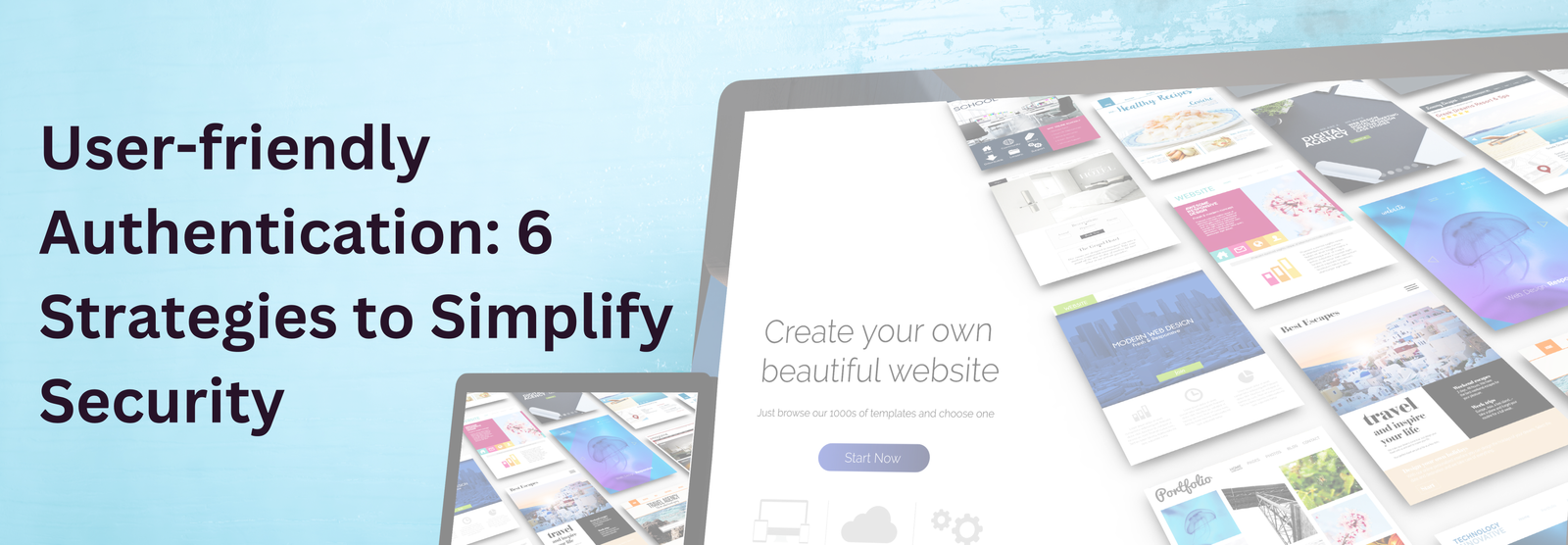
In today’s digital age, security is a top priority, but it often comes at the cost of user convenience. Complex authentication systems can be a significant barrier to user engagement, leading to frustration and abandonment. However, it’s possible to strike a balance between security and usability. Here are six strategies to make authentication systems more user-friendly without compromising on security.
Passwords are the most common form of authentication, yet they can also be the most problematic. Complex password requirements often lead to user frustration. Here’s how you can simplify password requirements:
Encourage Passphrases: Instead of requiring complex combinations of letters, numbers, and symbols, encourage users to create passphrases. A passphrase like “SunnyDayInJune” is easier to remember and can be just as secure as a random string of characters.
Avoid Frequent Resets: Constantly prompting users to change their passwords can lead to weaker passwords. Instead, focus on monitoring for unusual login activity and guiding users to change passwords only when necessary.
Promote Password Managers: Encourage users to use password managers, which can generate and store complex passwords for them. This reduces the burden of remembering multiple passwords and enhances overall security.
Simplifying password requirements can make the authentication process less daunting for users, leading to a better user experience.
Single Sign-On (SSO) is a powerful tool for improving user convenience. SSO allows users to log in once and gain access to multiple applications or systems without needing to log in again. Here are the benefits of SSO:
Convenience: Users only need to remember one set of credentials, reducing the likelihood of forgotten passwords.
Reduced Login Fatigue: Frequent logins can be frustrating. This is reduced with SSO, which offers smooth access to several platforms.
Implementing SSO can streamline the authentication process, making it more convenient and user-friendly.
Biometric authentication uses unique biological characteristics, such as fingerprints, facial recognition, or voice recognition, to verify identity. This method is both secure and convenient. Here are the advantages of biometric authentication:
Ease of Use: Biometric methods are quick and intuitive, requiring no memorization of passwords.
Enhanced Security: Biometrics are difficult to replicate, providing a higher level of security.
User Preference: Many users prefer biometrics due to their convenience and speed.
To effectively implement biometric authentication, ensure your system complies with privacy regulations and securely stores biometric data.
In order to access a system, users must supply two or more verification factors using multi-factor authentication (MFA). While MFA adds an extra step, it significantly boosts security and can be designed to be user-friendly. Consider these tips for implementing MFA:
Flexible Options: Offer users various MFA options, such as SMS codes, authentication apps, or hardware tokens. This flexibility allows users to choose the method that best suits their needs.
Adaptive MFA: Use adaptive or risk-based authentication, which only requires MFA for high-risk logins (e.g., from a new device or location). This approach balances security and convenience.
Streamlined Setup: Ensure that the MFA setup process is straightforward and well-documented to minimize user frustration.
Incorporating MFA enhances security while providing users with choices that cater to their preferences.
Effective communication is crucial for making authentication systems user-friendly. Users need to understand why certain security measures are in place and how to navigate them. Here are some strategies for better communication:
Educational Content: Provide users with resources that explain the importance of security measures and how to use them effectively. This can include tutorials, FAQs, and guides.
Onboarding Process: Design a smooth onboarding process that guides users through authentication steps without overwhelming them. Use clear instructions and visual aids.
Responsive Support: Offer accessible customer support to help users who encounter issues with authentication. Prompt and helpful support can alleviate frustration and improve the overall experience.
Clear and concise communication helps users feel more confident and informed, reducing the likelihood of errors and enhancing satisfaction.
Progressive profiling involves gradually collecting user information over time rather than asking for it all upfront. This approach can make the registration and authentication process less daunting for users. Benefits of progressive profiling include:
Reduced Initial Friction: By requesting only essential information initially, you minimize the barriers to account creation.
Improved User Experience: As users engage with your service, you can request additional information in a contextually relevant manner, making the process feel more natural.
Enhanced Data Quality: Progressive profiling can lead to more accurate and complete user data, as users are more likely to provide correct information when asked at appropriate times.
Implementing progressive profiling can make the authentication process smoother and more user-friendly, leading to higher user satisfaction and retention.
Creating a balance between security and usability is essential for modern authentication systems. By simplifying password requirements, implementing Single Sign-On, utilizing biometric authentication, incorporating Multi-Factor Authentication, providing clear communication, and leveraging progressive profiling, you can enhance the user experience without compromising security.
These strategies not only improve user satisfaction but also foster trust and loyalty. In an era where digital interactions are increasingly common, prioritizing both security and usability is critical for any organization aiming to provide a seamless and secure user interface experience. By making authentication systems more user-friendly, you can ensure that security measures enhance rather than hinder the user journey.